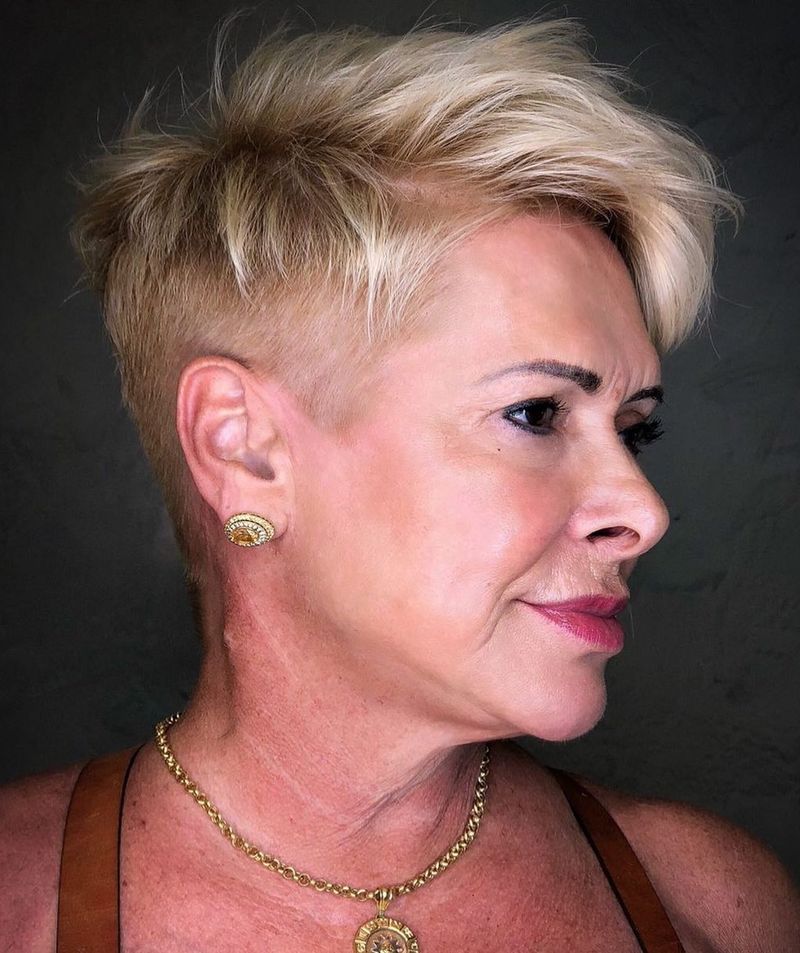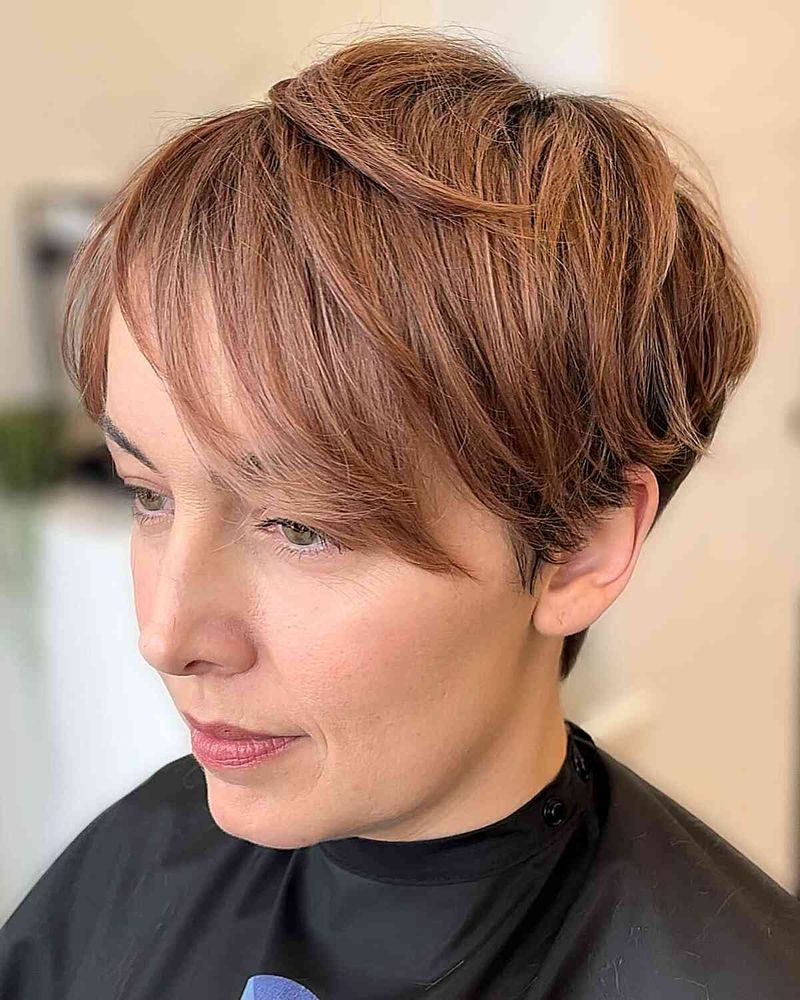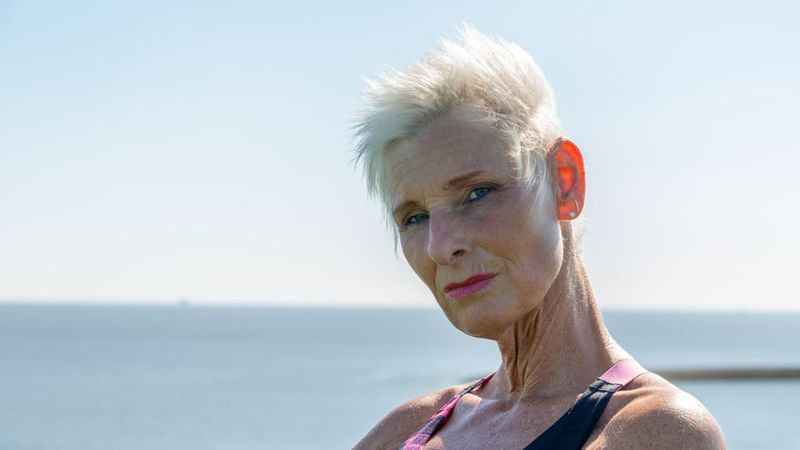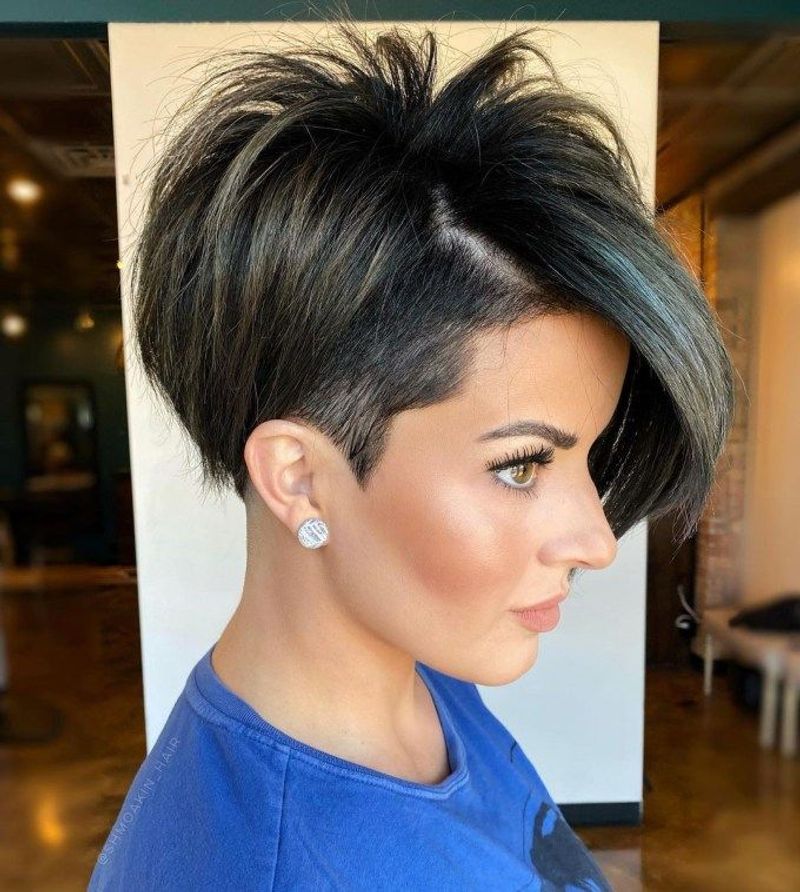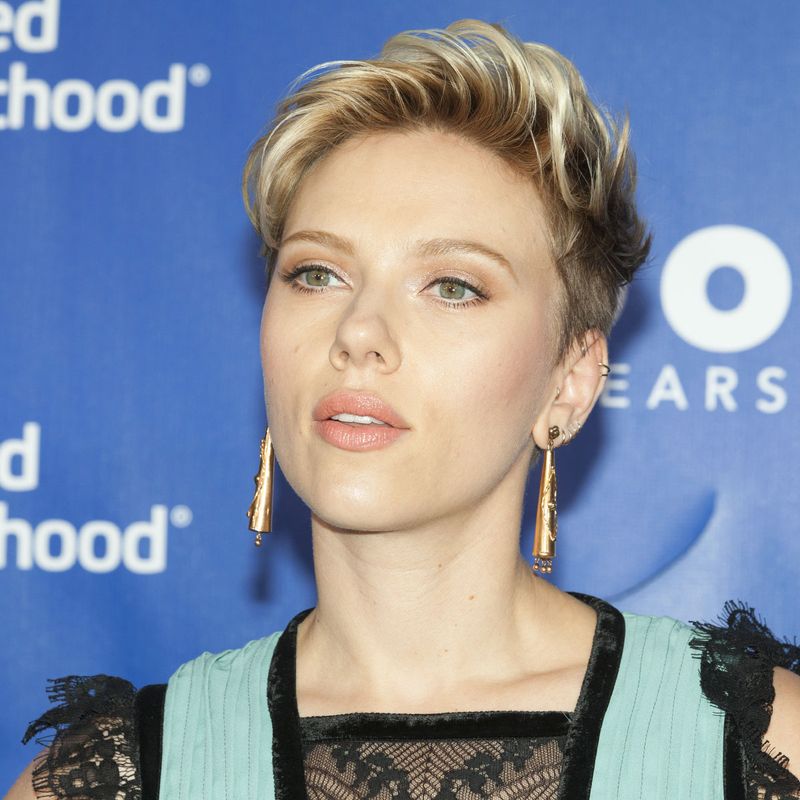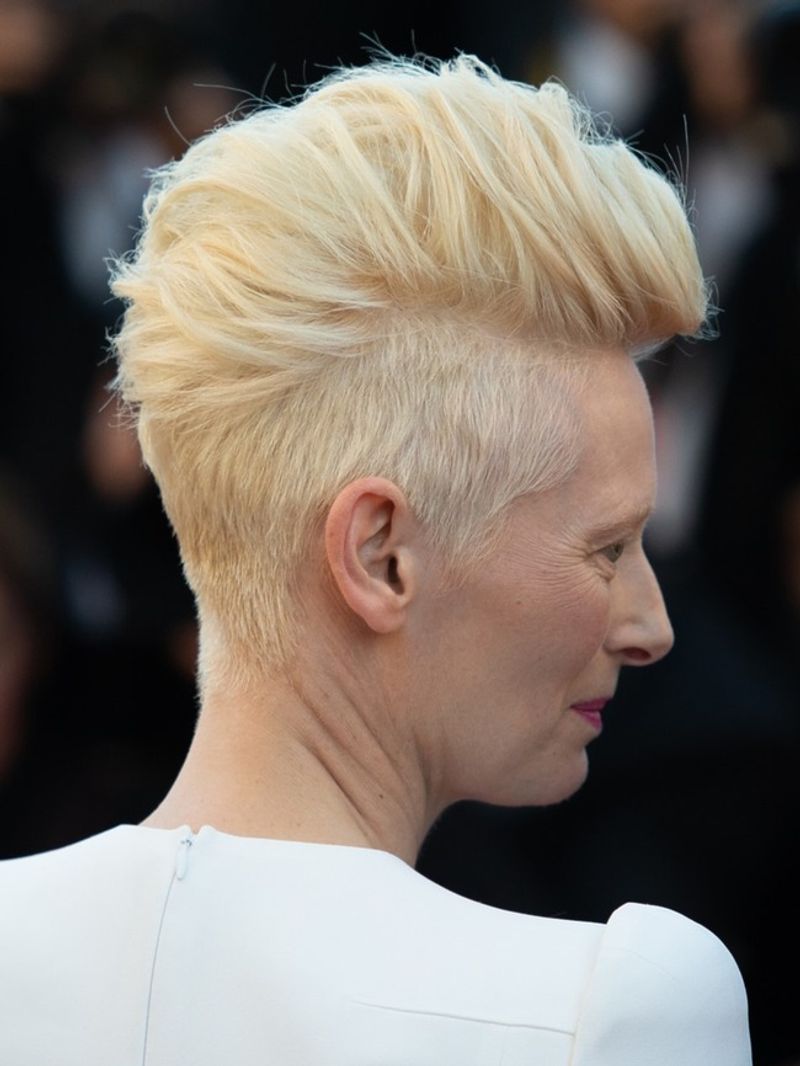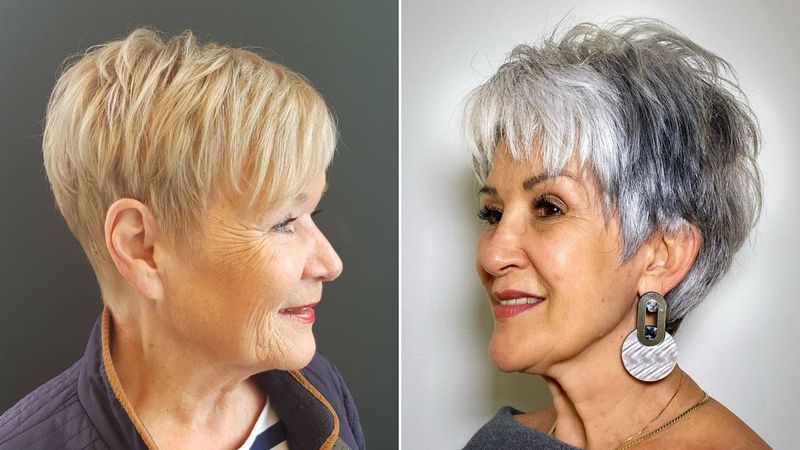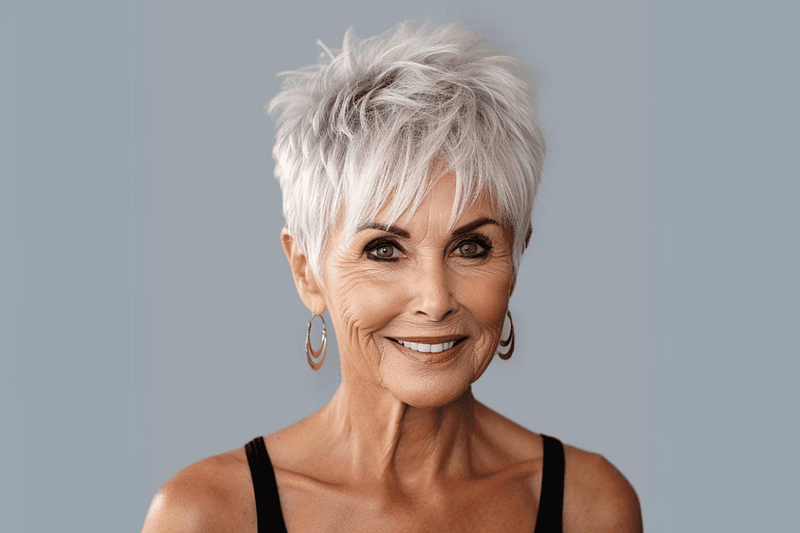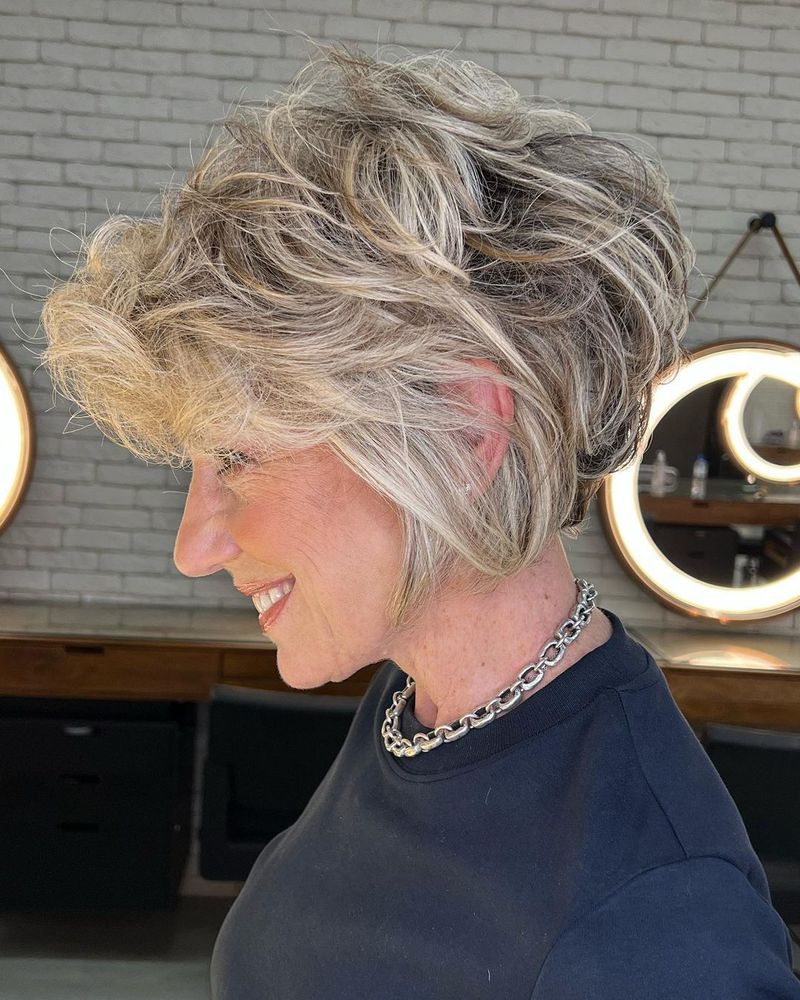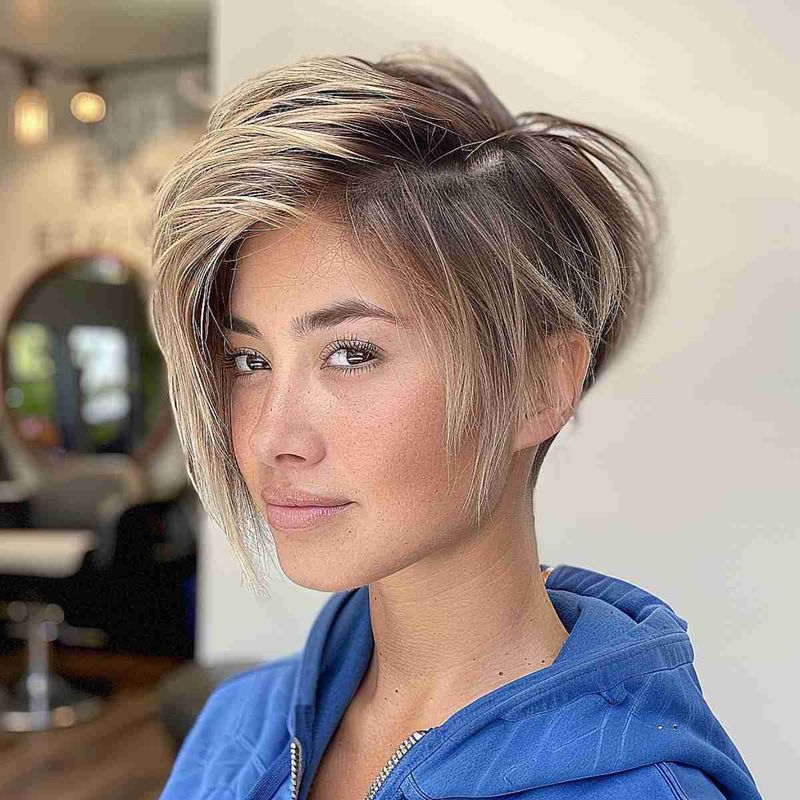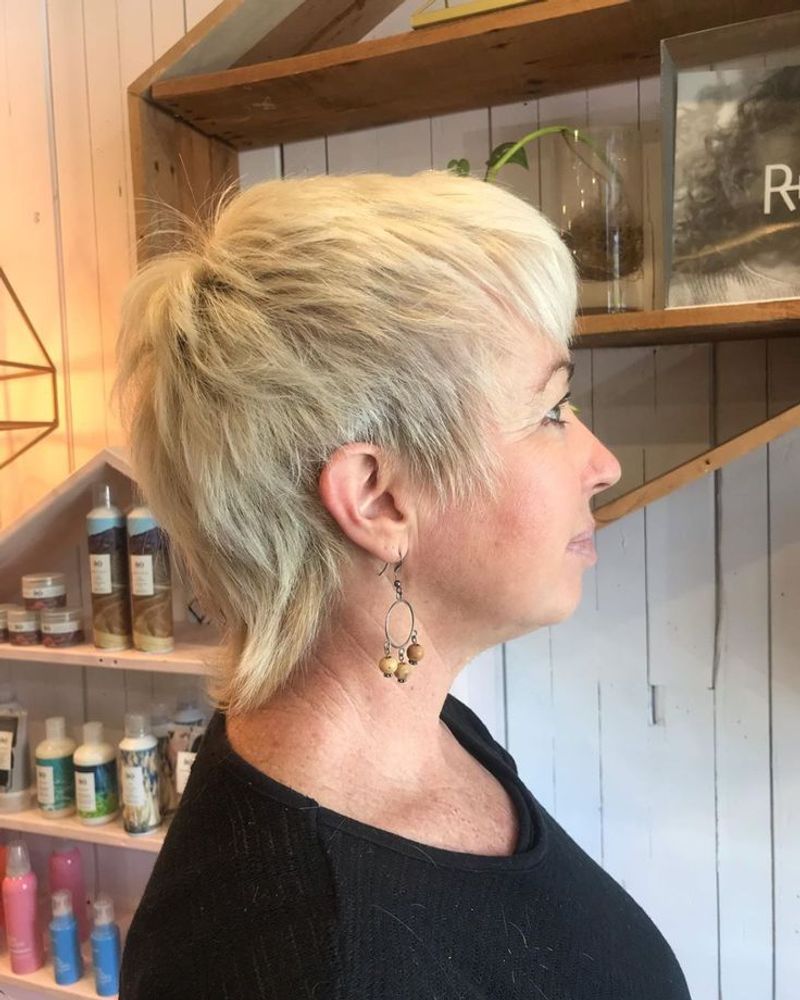Finding the right pixie haircut can be tricky when you’re over 60 and have fine hair.
While pixies can be stylish and low-maintenance, not all styles work well with the natural changes in hair texture and density that come with age. Here are 16 pixie cuts to avoid, plus 4 more you might seriously regret trying.
1. Super Short Buzzed Sides
Extremely short sides create harsh contrast with the crown, making fine hair look even thinner on top.
The stark difference between lengths emphasizes any scalp visibility and can appear too severe for mature faces.
Related: -14 Empowering Pixie Styles for Women Over 40 Who Own Their Look
2. Blunt One-Length Pixie
Single-length pixie cuts lie flat against the head when hair is fine, creating zero volume or movement.
The uniform cutting technique removes any natural lift, making hair appear limp and lifeless rather than chic and sophisticated.
3. Spiky Top Pixie
Remember the 90s spiky pixie? On fine mature hair, those spikes fall flat quickly or look unnaturally stiff with product.
The texture appears forced rather than playful, often aging the face instead of providing a youthful effect.
4. Severe Asymmetrical Pixie
Dramatic asymmetrical cuts with one side much longer than the other create imbalance with mature features.
The stark contrast draws attention to thinning areas and often requires constant styling that fine hair simply can’t maintain throughout the day.
5. Slicked-Back Pixie
Pulling fine hair straight back exposes the scalp and forehead, creating a harsh appearance.
The wet-look styling products needed for this look make already-fine hair appear stringy and emphasize any thinning at the crown.
6. Bowl-Cut Pixie
The rounded bowl-cut shape sits heavily around the face, dragging down features instead of lifting them.
Fine hair lacks the density to support this geometric shape, resulting in a flat, helmet-like appearance that ages rather than flatters.
7. Pixie With Micro Bangs
Extremely short bangs draw attention to forehead lines and require thickness to look intentional.
With fine hair, micro bangs appear sparse and wispy rather than bold and fashion-forward, often creating an awkward growing-out phase that’s difficult to style.
8. Pixie undercut
Shaved sections underneath might look edgy on younger, thicker hair, but create odd proportions with fine mature hair.
The remaining top section lacks the volume to balance the shaved areas, often resulting in a top-heavy or mushroom-like silhouette.
9. Pixie With Long Sideburns
Extended pieces in front of the ears draw the face downward, emphasizing jowls and neck laxity.
These longer sections tend to separate and look stringy in fine hair, creating disconnected strands rather than the sleek lines intended by the style.
10. Overly Texturized Pixie
Heavy texturizing thins already fine hair further, creating piecey sections with visible scalp between them.
The choppy effect meant to add movement actually removes precious density, making hair appear more sparse than it actually is.
11. Blunt Heavy Bangs
Thick, straight-across bangs require substantial hair to look intentional. With fine hair, they appear wispy and sparse, often separating to show forehead.
The weight of forward-falling bangs flattens volume at the crown where mature women need it most.
12. Overly Layered Crown
Too many layers at the crown create spiky, uneven texture in fine hair rather than volume.
What works for thick hair becomes problematic for fine strands, as excessive layering removes weight needed for structure, resulting in flat spots and inconsistent texture.
13. Pixie With Long Nape
A short top with lengthy back creates a reverse-mullet effect that’s particularly unflattering on fine hair.
The longer nape sections appear stringy and thin, drawing attention to neck aging while the crown lacks the volume to balance the silhouette.
14. Pixie With Disconnected Lengths
Dramatic differences between top and side lengths create harsh transitions that fine hair can’t blend naturally.
These architectural cuts require substantial styling product and manipulation, often making fine hair look greasy or weighed down by midday.
15. Curly Permed Pixie
Perming already fine hair creates frizzy, damaged texture that lacks definition.
The chemical process further thins the hair shaft, often resulting in a cotton candy-like texture that emphasizes scalp visibility and lacks the moisture to maintain curl pattern.
16. Severe Center-Parted Pixie
Middle parts create symmetrical curtains that expose thinning at the part line and temples.
Fine hair lacks the density to adequately cover the scalp with this parting, creating an unintentional peek-a-boo effect that ages rather than flatters.
17. Regret #1: Platinum Blonde Pixie
Double-processing fine hair to achieve platinum blonde causes severe damage and breakage.
The harsh bleaching process thins already delicate strands, often resulting in a transparent, cotton-like texture that exposes the scalp and emphasizes any natural hair loss.
18. Regret #2: Shaggy Mullet Pixie
The trendy shag-mullet hybrid overwhelms fine hair and mature features with too many disconnected layers.
This style requires substantial hair density to avoid looking stringy and unintentional, often creating a dated effect rather than the edgy statement intended.
19. Regret #3: Wet-Look Pixie
The slick, product-heavy styling makes fine hair look sparse and greasy rather than editorial.
Heavy styling products collapse what little volume exists, plastering fine strands to the scalp and creating separation that emphasizes any thinning areas.
20. Regret #4: Pixie With Razor-Cut Edges
Razor cutting creates wispy, feathered ends that make fine hair look even thinner and more fragile.
The technique removes bulk that fine-haired women actually need, resulting in ends that appear damaged rather than deliberately textured, with little ability to hold any style.


